Porthcawl Christmas ride
Where did the year go? It’s the Christmas ride again. This time we pass three castles, one manor house, three RAF stations (two of which are former), two listed bridges and some hidden WW1 gems. We’re starting from Rhoose railway station (10 miles from Cardiff) and riding to Porthcawl. In the seventies Porthcawl was the premier resort of South Wales and I spent most of my childhood holidays there. At the time, British coal miners and steel workers were only allowed to have two weeks off mid-summer; the last week in July and the first week in August. It was before the era of cheap package holidays, when they flocked to Porthcawl in their thousands, this mid-summer break became known as the ‘miner’s fortnight’.
Day 1- Rhoose to Porthcawl (23 miles)
 We alighted the train into miserable weather conditions, and in fact, considering Rhoose airport
is the aerial gateway to the capital of Wales, the whole station is drab and miserable.
We headed north on Fonmon road towards ‘Fonmon castle’, with its origins rooted in
the 12th century it's seen today as a great architectural rarity. There is another castle we pass
on route- the east orchard castle, a ruined building whose remains date mainly from the 14th
century. Now we continue passed RAF St Athan, once claimed to be the largest Royal Air Force station
in the UK, and for now, the route is flat.
We alighted the train into miserable weather conditions, and in fact, considering Rhoose airport
is the aerial gateway to the capital of Wales, the whole station is drab and miserable.
We headed north on Fonmon road towards ‘Fonmon castle’, with its origins rooted in
the 12th century it's seen today as a great architectural rarity. There is another castle we pass
on route- the east orchard castle, a ruined building whose remains date mainly from the 14th
century. Now we continue passed RAF St Athan, once claimed to be the largest Royal Air Force station
in the UK, and for now, the route is flat.
A little way on we take a small detour to see the Manor house of Plas Llanmihangel, a 13th century grade 1 listed building, wedding venue and B&B and then through Llandow (made famous from a ‘Twin Town’ (film) saying) “As they say in Llandow, chow for now”. Today it houses Llandow motor racing circuit, but it began life as an airfield during World War II. RAF Llandow was home to Supermarine Spitfires and part of the Royal Canadian Air Force, it was decommissioned in 1957.
 While travelling along Tair Croes road on the National Cycle Network Route 888, we came across
the remnants of the Mid Glamorgan hunt. Whatever your views are on fox hunting, the hunts have always
had a deeper value. Many horses and jockeys begin their careers on these events, progressing to
‘point to point’ races or ‘over the sticks’ at proper race courses. We passed into Ewenny, a small
village on the crossing of the Ewenny river and then onto the ‘dipping bridge’ which cross’s
the Merthyr Mawr (River Ogmore). Sadley,
from here, it’s onto the main road, and then through Tythegston. Now we turn left into Beach
Road and passed the ‘Jolly Sailor’ pub (a pub I can remember going to with my dad as a kid) and into Bay
View Road which goes through Trecco Bay holiday park. The resort had its own funfair ‘Coney beach’,
which was originally built to entertain American troops returning from World
War I, the park was named as a tribute to the famous New York amusement park on Coney Island.
While travelling along Tair Croes road on the National Cycle Network Route 888, we came across
the remnants of the Mid Glamorgan hunt. Whatever your views are on fox hunting, the hunts have always
had a deeper value. Many horses and jockeys begin their careers on these events, progressing to
‘point to point’ races or ‘over the sticks’ at proper race courses. We passed into Ewenny, a small
village on the crossing of the Ewenny river and then onto the ‘dipping bridge’ which cross’s
the Merthyr Mawr (River Ogmore). Sadley,
from here, it’s onto the main road, and then through Tythegston. Now we turn left into Beach
Road and passed the ‘Jolly Sailor’ pub (a pub I can remember going to with my dad as a kid) and into Bay
View Road which goes through Trecco Bay holiday park. The resort had its own funfair ‘Coney beach’,
which was originally built to entertain American troops returning from World
War I, the park was named as a tribute to the famous New York amusement park on Coney Island.
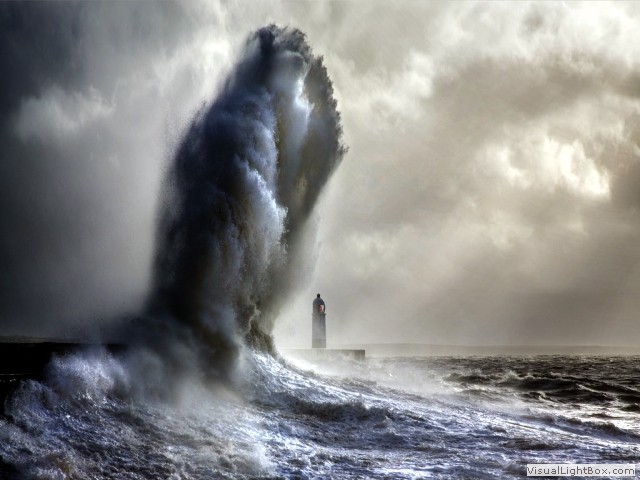 The light had faded to dark as we plod along the eastern promenade and onto the esplanade to
the ‘Seabank hotel’, our stop for tonight. It’s a quick shower and a few chips before we enter
the ‘Grand Pavilion’ for a carol concert. After the concert we trotted off to the lighthouse on the
quay. The 30ft high lighthouse was built in 1860, and has kept shipping safe through the Bristol
Channel and into Porthcawl marina, but today due to a fluke in the quayside
construction (and when the wind is in the right direction), it’s more famous
for the spectacular breaking waves it creates. Back at the Seabank hotel the entertainment
was already in full swing with quite a good comedian/singer.
The light had faded to dark as we plod along the eastern promenade and onto the esplanade to
the ‘Seabank hotel’, our stop for tonight. It’s a quick shower and a few chips before we enter
the ‘Grand Pavilion’ for a carol concert. After the concert we trotted off to the lighthouse on the
quay. The 30ft high lighthouse was built in 1860, and has kept shipping safe through the Bristol
Channel and into Porthcawl marina, but today due to a fluke in the quayside
construction (and when the wind is in the right direction), it’s more famous
for the spectacular breaking waves it creates. Back at the Seabank hotel the entertainment
was already in full swing with quite a good comedian/singer.
Day 2- Porthcawl to Bridgend (11 miles and then the train home)
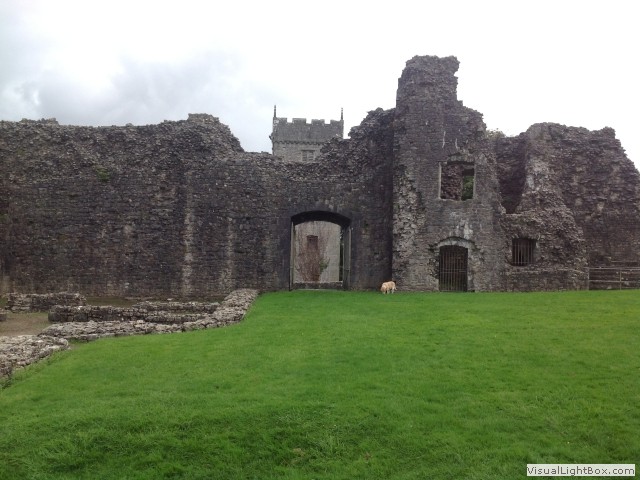 We had a few beers last night and managed a good breakfast in the morning before setting off
through Nottage. The weather began to spit heavily, making it colder due to the wind chill. We crossed the A48 at
Stormy Down (which was another former RAF base) and continued on Llangewydd road to enter the
west side of Bridgend. We stopped off at Newcastle for a quick photo, and then moved on crossing
the River Ogmore on a medieval bridge and into the old town. It’s a short ride now to Bridgend
station where we sample a coffee in the station café and wait for our train.
We had a few beers last night and managed a good breakfast in the morning before setting off
through Nottage. The weather began to spit heavily, making it colder due to the wind chill. We crossed the A48 at
Stormy Down (which was another former RAF base) and continued on Llangewydd road to enter the
west side of Bridgend. We stopped off at Newcastle for a quick photo, and then moved on crossing
the River Ogmore on a medieval bridge and into the old town. It’s a short ride now to Bridgend
station where we sample a coffee in the station café and wait for our train.
Porthcawl has great memories for me and wow, those flashbacks came flooding back when we passed through Trecco Bay. Porthcawl is no stranger to cycle racing, it held many professional road races in the late eighties and continues to promote World class events, the Pavilion even held World record breaking cycle roller events. As for this trip, I can’t honestly remember cycling being so hard in cold weather, but it’s always a struggle these days, maybe the beer has something to do with it.
-
Gallery
 Why not have a look at the gallery relating to this ride. Click the image or the title.
Why not have a look at the gallery relating to this ride. Click the image or the title. -
RAF St Athan dummy airfield
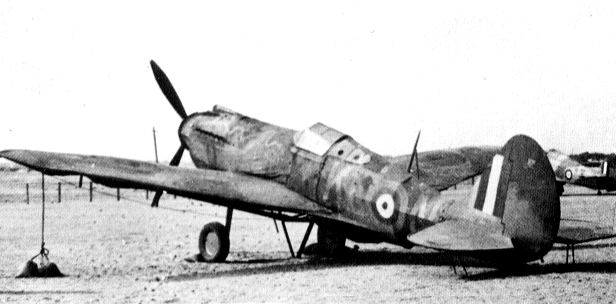 During WW2 a dummy airfield was built using wood and cardboard a few miles west of the original
airfield in an effort to hide the proper airfield. The Germans attacked the dummy airfield a
number of times and each time it was rebuilt.
During WW2 a dummy airfield was built using wood and cardboard a few miles west of the original
airfield in an effort to hide the proper airfield. The Germans attacked the dummy airfield a
number of times and each time it was rebuilt. -
The 'dipping bridge' legend
 Built in the 15th century with holes in the parapets where farmers once pushed reluctant
sheep into the river to wash the fleeces before shearing. At the side of the bridge once
stood an Inn where the landlord (Cap Goch) would rob and murder travellers en route to St.
David’s shrine. The Inn was demolished in the 1900’s, then the truth came to light when
the garden was dug up, discovering several bodies buried in twos and threes at every
conceivable spot. He wasn't brought to task over this. However, historical fact shows
that he was hanged on Stalling Down near Cowbridge on the charge of stealing a sheep.
Built in the 15th century with holes in the parapets where farmers once pushed reluctant
sheep into the river to wash the fleeces before shearing. At the side of the bridge once
stood an Inn where the landlord (Cap Goch) would rob and murder travellers en route to St.
David’s shrine. The Inn was demolished in the 1900’s, then the truth came to light when
the garden was dug up, discovering several bodies buried in twos and threes at every
conceivable spot. He wasn't brought to task over this. However, historical fact shows
that he was hanged on Stalling Down near Cowbridge on the charge of stealing a sheep. -
Porthcawl minature railway
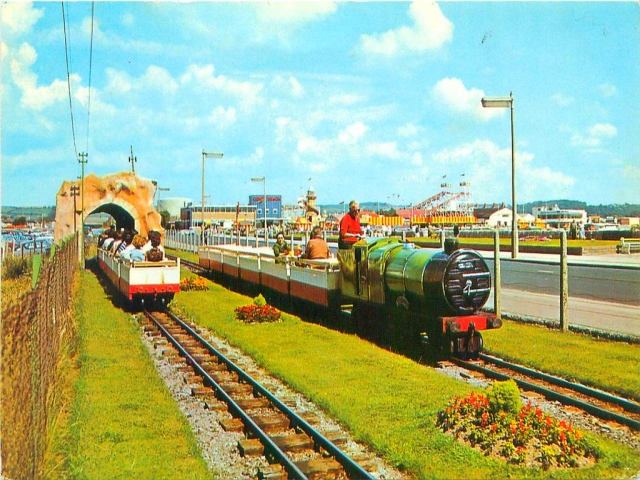 Porthcawl did have its own branch line railway station, but in 1935 a miniature railway
(PMR) was built as an added attraction to the Fun Fair. The line was 400 Yards long and
consisted of a station at each end, Coney Beach at one end and Pier End at the other. The
railway was closed and dismantled in 1985.
Porthcawl did have its own branch line railway station, but in 1935 a miniature railway
(PMR) was built as an added attraction to the Fun Fair. The line was 400 Yards long and
consisted of a station at each end, Coney Beach at one end and Pier End at the other. The
railway was closed and dismantled in 1985. -
Pavilion World record attempts
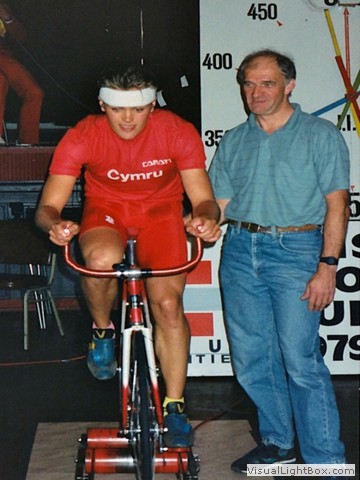 During the eighties and early nineties Porthcawl Pavilion held World record challenges verified
by the Guinness book of records. Rollers were used connected to large milometer dials, recording
the miles over the 24 hour event. In 1989 a team from ‘Ogmore valley wheelers’ beat the World record.
During the eighties and early nineties Porthcawl Pavilion held World record challenges verified
by the Guinness book of records. Rollers were used connected to large milometer dials, recording
the miles over the 24 hour event. In 1989 a team from ‘Ogmore valley wheelers’ beat the World record.

 During WW2 a dummy airfield was built using wood and cardboard a few miles west of the original
airfield in an effort to hide the proper airfield. The Germans attacked the dummy airfield a
number of times and each time it was rebuilt.
During WW2 a dummy airfield was built using wood and cardboard a few miles west of the original
airfield in an effort to hide the proper airfield. The Germans attacked the dummy airfield a
number of times and each time it was rebuilt. Built in the 15th century with holes in the parapets where farmers once pushed reluctant
sheep into the river to wash the fleeces before shearing. At the side of the bridge once
stood an Inn where the landlord (Cap Goch) would rob and murder travellers en route to St.
David’s shrine. The Inn was demolished in the 1900’s, then the truth came to light when
the garden was dug up, discovering several bodies buried in twos and threes at every
conceivable spot. He wasn't brought to task over this. However, historical fact shows
that he was hanged on Stalling Down near Cowbridge on the charge of stealing a sheep.
Built in the 15th century with holes in the parapets where farmers once pushed reluctant
sheep into the river to wash the fleeces before shearing. At the side of the bridge once
stood an Inn where the landlord (Cap Goch) would rob and murder travellers en route to St.
David’s shrine. The Inn was demolished in the 1900’s, then the truth came to light when
the garden was dug up, discovering several bodies buried in twos and threes at every
conceivable spot. He wasn't brought to task over this. However, historical fact shows
that he was hanged on Stalling Down near Cowbridge on the charge of stealing a sheep. Porthcawl did have its own branch line railway station, but in 1935 a miniature railway
(PMR) was built as an added attraction to the Fun Fair. The line was 400 Yards long and
consisted of a station at each end, Coney Beach at one end and Pier End at the other. The
railway was closed and dismantled in 1985.
Porthcawl did have its own branch line railway station, but in 1935 a miniature railway
(PMR) was built as an added attraction to the Fun Fair. The line was 400 Yards long and
consisted of a station at each end, Coney Beach at one end and Pier End at the other. The
railway was closed and dismantled in 1985.  During the eighties and early nineties Porthcawl Pavilion held World record challenges verified
by the Guinness book of records. Rollers were used connected to large milometer dials, recording
the miles over the 24 hour event. In 1989 a team from ‘Ogmore valley wheelers’ beat the World record.
During the eighties and early nineties Porthcawl Pavilion held World record challenges verified
by the Guinness book of records. Rollers were used connected to large milometer dials, recording
the miles over the 24 hour event. In 1989 a team from ‘Ogmore valley wheelers’ beat the World record.